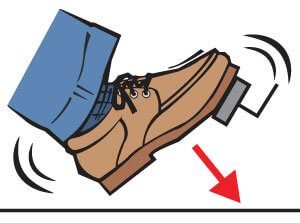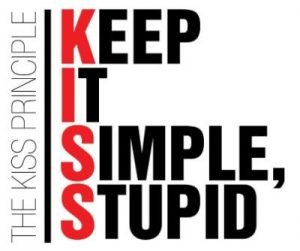So the battle has begun… the first of European federation presidents to speak publicly about the changes to the FIH calendar was Marc Coudron from Belgium. Yesterday he expressed in the Belgian newspaper La Libre some interesting statements.
Fight
 Firstly, there is a “fight” within FIH between those who defend our European “club” hockey and those who could care less because they do not know such a club culture in their parts of the world, according to Coudron. Normally it would not be so hard to predict a winner in these kinds of fights. Usually it’s those who bring in the most money that will prevail. There is no doubt India is the biggest cash cow, holy or not, for the FIH. However do not underestimate the amount of money brought to the table by the tiny country of the Netherlands. Together with its neighbouring countries the European hockey nations should be good for at least 50% and probably more of the global hockey revenues I dare say. The cash from the rest of the world I would think is neglect-able… So it looks like the fight will be between newly elected FIH president Batra with his FIH marketing team, supported by these other countries without a club competition versus the European hockey nations.
Firstly, there is a “fight” within FIH between those who defend our European “club” hockey and those who could care less because they do not know such a club culture in their parts of the world, according to Coudron. Normally it would not be so hard to predict a winner in these kinds of fights. Usually it’s those who bring in the most money that will prevail. There is no doubt India is the biggest cash cow, holy or not, for the FIH. However do not underestimate the amount of money brought to the table by the tiny country of the Netherlands. Together with its neighbouring countries the European hockey nations should be good for at least 50% and probably more of the global hockey revenues I dare say. The cash from the rest of the world I would think is neglect-able… So it looks like the fight will be between newly elected FIH president Batra with his FIH marketing team, supported by these other countries without a club competition versus the European hockey nations.To change or not to change, that is the question
 Secondly, as expected, the Belgian federation is taking the “we have always done it this way, so we will not change” approach and is sticking to their known club competition with 12 clubs in the Honour Division. Coudron thinks he can manage it, with just a little bit of shuffling dates, to combine his Honour Division with his national team.
Secondly, as expected, the Belgian federation is taking the “we have always done it this way, so we will not change” approach and is sticking to their known club competition with 12 clubs in the Honour Division. Coudron thinks he can manage it, with just a little bit of shuffling dates, to combine his Honour Division with his national team.The new global Home & Away League (name & branding still unknown) was modelled after the successful Six Nations for the game of rugby Coudron tells us. Suppose our new league will consist of 9 countries, that would mean 16 games all over the world plus 2 more for the semi-final and final at 1 central location. So Coudron sees his Red Lions playing 4 games away (in the southern hemisphere) during the first 6 weeks of the calendar year, 4 games at home or nearby during 2 weeks around the Easter period in April in between their regular club competition and its play off. And all other games (8-10… not 6 like Coudron claimed in the paper) in this League would have to be played between mid May and the end of June after the play off from his local Honour Division.
The founder of the HIL and president of the FIH Batra already stated his HIL would move from January – February to most likely September and October which would mean the traditional start of our European competitions would clash with this high profile Indian League. So if European top players (and those playing for these European clubs) would be denied playing the HIL, that loss of income would have to be compensated by either their national team or their European club team…. or we choose to remain a sport for semi-professionals enjoying themselves for some pocket-money during their studies and early careers. Coudron sees possibilities to pay higher salaries for his players (without specifying if he means only for his national team or also the clubs) and thinks the new format would raise more money like it did for the game of rugby.
It would seem Coudron prefers this scenario to changing his Belgian club competition to a new format over a shorter period of time… However, nothing is set in stone just yet.
But let’s not forget the calendar also has to find room for such tournaments for national teams as the European Championship and its counterparts in other continents, the World League, the Olympic Qualifier, the World Cup (and the Junior WC), the Olympic Games (and the Youth Olympics) and for some the Commonwealth Games. Plus we have this EHL we’ve been struggling with, over here in Europe for club teams who’s ambitions go beyond their own borders.
Brake
 The most important statement by Coudron in this article from La Libre however was “I will brake at 2000% all suggestions that want to kill our championships.” (“Je freine à 2 000 % les discours qui veulent tuer nos championnats“).
The most important statement by Coudron in this article from La Libre however was “I will brake at 2000% all suggestions that want to kill our championships.” (“Je freine à 2 000 % les discours qui veulent tuer nos championnats“).The coming weeks and months will show if these were just words or if our European federations really will defend our traditional club culture…. or and I think this will be the most likely scenario if FIH and Europe will find a middle way at the cost of the players….
KISS
 My two cents? I think the best approach would be the KISS approach. Basically there are two kind of competitions (events/tournaments): those for national teams and those for local teams (clubs of franchises). Let’s give each of them 6 months of the year reserved solely for them. Nature gave us 4 seasons, let’s use these. So September, October and November plus March, April and May for local events of clubs or team-franchises. And December, January and February plus June, July and August for international events of national teams. Adapt this with rigour (!) and all else will fall into place. Possibly even some these Home & Away League games for national teams could be played during the season for local competition if the FIH would not have the European teams (because of our club competitions) travel too far in these months. Hopefully the HIL and European federations would come to a good understanding in this scenario for their mutual benefit (because they both want the European top players in their events) where with some give & take from all concerned the best dates are chosen together. That way our sport would continue to benefit from all the good stuff that comes from the HIL, the EHL, the Hoofdklasse, Honour Division, Bundesliga, etc… and all will be good 😉
My two cents? I think the best approach would be the KISS approach. Basically there are two kind of competitions (events/tournaments): those for national teams and those for local teams (clubs of franchises). Let’s give each of them 6 months of the year reserved solely for them. Nature gave us 4 seasons, let’s use these. So September, October and November plus March, April and May for local events of clubs or team-franchises. And December, January and February plus June, July and August for international events of national teams. Adapt this with rigour (!) and all else will fall into place. Possibly even some these Home & Away League games for national teams could be played during the season for local competition if the FIH would not have the European teams (because of our club competitions) travel too far in these months. Hopefully the HIL and European federations would come to a good understanding in this scenario for their mutual benefit (because they both want the European top players in their events) where with some give & take from all concerned the best dates are chosen together. That way our sport would continue to benefit from all the good stuff that comes from the HIL, the EHL, the Hoofdklasse, Honour Division, Bundesliga, etc… and all will be good 😉Read some of the recent articles I wrote about this as well : Adapt or Die – Money Time for Hockey – Sport or Entertainment.

